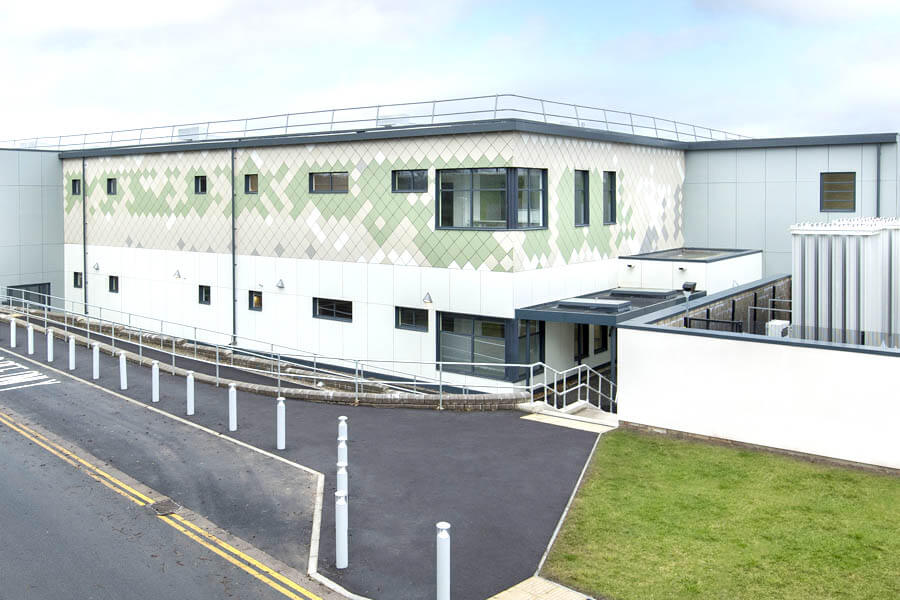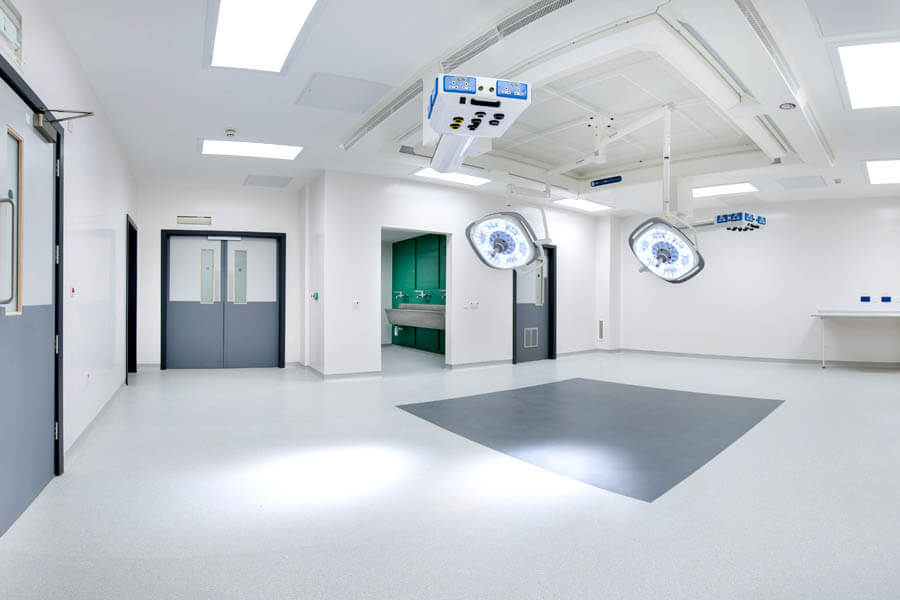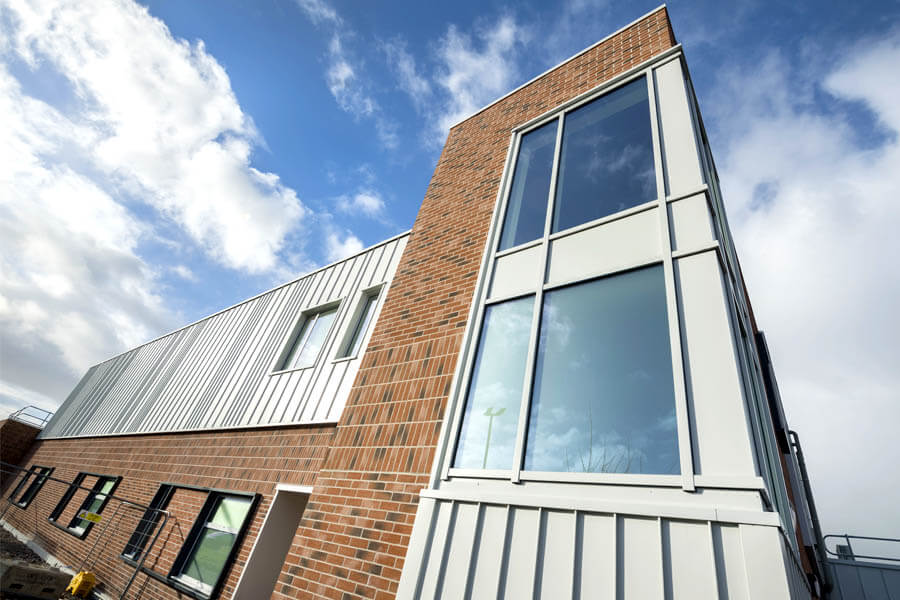
MTX has worked nationally for over two decades, serving the NHS with the construction of state-of-the-art healthcare environments. We are committed to delivering social value and ensuring we give something back.

MTX has worked nationally for over two decades, serving the NHS with the construction of state-of-the-art healthcare environments. We are committed to delivering social value and ensuring we give something back.


Basil Jackson is the Managing Director of Vemco Consulting Ltd, a consultancy specialising in the delivery of specialist engineering services including fire engineering, highways and transport infrastructure. He is a chartered fire engineer, chartered civil engineer and chartered building engineer.
I started off working as a consultant for Ideal Building Systems – indirectly working with MTX over a number of years. An independent family-owned company with many years of experience in the modular building sector, Ideal manufactures structural steel modular units or ‘chassis’ that have been used by MTX on healthcare projects across the UK. More recently I have worked directly with MTX.
I don’t tend to talk in terms of making a building safe. As a fire engineer, I talk about making sure the risk to life is at as tolerable level. I once went to a residential building where someone had hoarded newspapers and filled several rooms floor-to-ceiling with newsprint. That was a huge amount of combustible material which would not be part of any design consideration. My job is to ensure that the building has been designed to a level where the risk is tolerable. But we surround ourselves with combustible material. You have to accept a fire may start, but we can minimise the ability of that fire to spread uncontrollably. You can’t make a building ‘safe’ but you can reduce the design risk to a tolerable level.
That is set out in Fire safety: Approved Document B, a building regulation in England covering fire safety matters within and around buildings.
It splits into 5 sections:
Requirement B1: Means of warning and escape: the need to alert occupants and extract smoke from escape routes.
Requirement B2: Internal fire spread (linings): protecting escape routes by lining the walls so they will not combust.
Requirement B3: Internal fire spread (structure): ensuring the building’s stability is not adversely affected by a fire. A steel structure conducts heat very well, and if it reaches a high temperature steel can lose 30% of its strength and building can start to collapse.
Requirement B4: External fire spread: preventing fire spread within a concealed space in the cavity of an external wall, or fire venting from a window in one building spreading to an adjacent building.
Requirement B5: Access and facilities for the fire service: ensuring there is sufficient access to equipment and resources such as water mains, dry risers to give firefighters the means to fight the fire.
Within healthcare, there is the added driver that patients cannot easily be evacuated, and the services and gases could exacerbate a fire.
Fire engineers have to consider the use and function of the building and how able the occupants are to evacuate. Rather than simply considering evacuation, we can now design buildings to have “areas of relative safety” that people can move to in the event of a fire.
All of these measures are important in managing the safety of people within a building. We may decide not to evacuate, but instead to move people to a zone where the risk is tolerable – surrounded by sufficient fire resisting materials – typically giving 60 minutes protection. Taking everyone out of the building is not a viable proposition in many cases. So one alternative is phased evacuation. It is fundamental to the design of the building.
To determine fire resistance, you can simply build it and burn it, but there are so many variations to a design you can’t burn them all! Instead, we use an ‘extended application’. We take a similar tested arrangement and extrapolate the likely behaviour of certain parts of that building. The conclusions must be bounded in science and engineering facts and figures.
Combustibility is about how well something burns. But combustibility and fire resistance are two very different things. For example; wood burns, steel does not. But wood has very good fire resisting properties; most fire doors are made of wood and while the surface will burn it takes a long time for heat to transfer through it.
Steel has very poor fire resisting properties and conducts heat very quickly. Therefore, you need to protect the steel elements of a building – because steel will conduct the heat, it will heat up and may start to affect the structural integrity of the building.
Each is subject to the same measures. There is no question of a well-built and well-designed MMC building being any less safe than a conventional build.
 At what stage do you get involved in a new building?
At what stage do you get involved in a new building?In some cases, much too late! This is a problem with clients who may come to me and say ”We’ve built it – prove that it works!” That is the wrong way around.
MTX understands the advantages of early engagement of a fire engineer, so I get involved during the design process. Repairing something retrospectively in a building can involve huge costs. It pays to get the fire engineer involved early.
Yes, but within the industry we knew that long before the BSA was introduced. Safety now leads the construction process and needs to be number one on the agenda, but that does not always include fire safety. Fire safety must also be there at the head of the agenda.
Grenfell has, in recent years, focused attention on the fire safety of buildings, but there have been other fatal fires such as Lakanal House in Camberwell back in 2009, when six people died in a tower block; yet little changed until Grenfell.
The fire strategy is the bible for the building, and describes how that building will operate in the event of a fire, because two similar buildings may operate quite differently. When I get involved in a project, one of the first documents I ask for from clients is the fire strategy – how will vents work, what fire resistance surrounds the stairwell, how will people evacuate the building or access safe areas, and how are those safe areas protected? These are all described in the fire strategy.
Some clients struggle to understand the importance of that document. Every plasterer, every joiner putting up the partitions and every ventilation engineer needs to know the fire strategy and understand the way their work contributes to the safety of people using that building.
For example, how can you put up plasterboard on a wall without a fire strategy that will tell you every detail of what you should be doing? If a wall needs 60 minutes fire resistance, you are permitted to make it more, but it will not be compliant to make it less.
Immediately you start to change things you can introduce errors that may compromise fire resistance. For example, a factory-built component may be painted with intumescent paint (which offers passive fire resistance) – but how can you be sure that the painted surface is intact, and has not been scraped or damaged in transit for installation?
I look for the method of working that minimises problems with the materials and how they can perform. Good methods of working are essential for modular or MMC builds, to minimise any problems with the transport and installation of materials.
Companies like MTX work hard to build well, and that includes taking the necessary actions to ensure they manage the fire risk through the early involvement of professionals like me. That has to be a good thing.

Sheldon Walsh is a qualified architect and a partner with Ryder. He has worked in this sector more than 20 years and leads the team in the Manchester office.

Second phase of a state of the art surgical hub at Clatterbridge Hospital on the Wirral has been completed by modern methods of construction specialist MTX.
The state-of-the-art Elective Orthopaedic Surgery Centre being built at Colchester Hospital features in a TV news report by BBC East Health Correspondent Nikki Fox.

MTX has completed a project to deliver four state-of-the-art operating theatres at the Royal Bolton Hospital